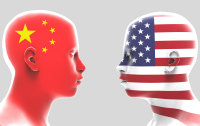Your cart is currently empty!
Tech News Digest – July 10
Facial Recognition Firm Under Global Scrutiny

A U.S. firm that scrapes data from social media sites and other Internet platforms is under investigation by regulators in the U.K. and Australia.
“Privacy regulators in the U.K. and Australia have announced a joint probe into Clearview AI’s ‘data scraping’ practices,” writes Sam Shead of CNBC. “The New York-headquartered company has built a facial recognition database by taking images from social media platforms and other websites without the consent of the people featured. It is reported that Clearview has ‘scraped’ more than 3 billion images from the internet to build its database, which law enforcement agencies use to try and identify criminals.”
From my perspective, this is another important data point in the trend toward greater oversight of technology companies. Like many executives in our industry, I’m sensing a shift in attitude, although it’s still uncertain where this trend will eventually lead and how far regulators will go.
Facebook Audit Highlights Problems in Social Media

An 89-page audit conducted by consultants hired by Facebook reveals the company’s failures to protect users from hate speech and misinformation, according to published reports. The audit adds fuel to the debate over the extent of Facebook’s responsibility as a social platform in a digitally connected world.
“Now Facebook has to decide whether its approach to hateful speech and noxious content — which was to leave it alone in the name of free expression — remains tenable. And that decision puts pressure on Mark Zuckerberg, Facebook’s chief executive, who has repeatedly said that his company was not an arbiter of truth and that it would not police politicians’ posts,” writes Mike Isaac of The New York Times.
For those of us in leadership roles within the technology community, the controversy raises legitimate and difficult questions about the proper role of technology in modern society.
“But the report was especially devastating for Facebook, because its executives had pointed to it as a sign that the company was seriously grappling with the content of its site,” Isaac writes.
Apple Vows to Support Intel’s Thunderbolt

Even as Apple shrinks its relationship with Intel, it will continue to support the Thunderbolt connectivity standard.
“Apple is moving away from Intel’s chipsets in favor of its new, custom-designed ARM chips — but the company is promising that it’ll still support Intel’s Thunderbolt USB-C connectivity standard on new Apple silicon computers, despite the lack of Intel processors,” writes Chaim Gartenberg of The Verge. “While there was some concern that Apple might be losing support for Thunderbolt on its upcoming Macs, the fact that Apple is sticking with the standard makes a lot of sense, given that it had helped develop the original Thunderbolt standard in collaboration with Intel.”
AI ‘Duel’ Between U.S. and China: More Collaborative Than Competitive?

Despite the hype, the competition between the U.S. and China for AI domination has been more of a collaboration than an all-out battle. But the recent ratcheting up of tensions between the two superpowers may lead to less cooperation in the future, and fewer collaborative initiatives.
“The narrative of an AI “arms race” between the US and China has been brewing for years. Dramatic headlines suggest that China is poised to take the lead in AI research and use, due to its national plan for AI domination and the billions of dollars the government has invested in the field, compared with the US’ focus on private-sector development,” writes Alison DeNisco Rayome of C-NET. “But the reality is that at least until the past year or so, the two nations have been largely interdependent when it comes to this technology. It’s an area that has drawn attention and investment from major tech heavy hitters on both sides of the Pacific.”
In related news, the U.S. military is apparently sharpening its AI capabilities, perhaps indicating a greater understanding of the role that advanced information technologies will play in future conflicts.
“The Pentagon’s artificial intelligence hub is shifting its focus to enabling joint warfighting operations, developing artificial intelligence tools that will be integrated into the Department of Defense’s Joint All-Domain Command and Control efforts,” writes Nathan Strout of C4ISRNET. “That marks a significant change from where JAIC stood more than a year ago, when the organization was still being stood up with a focus on using AI for efforts like predictive maintenance. That transformation appears to be driven by the DoD’s focus on developing JADC2, a system of systems approach that will connect sensors to shooters in near-real time.”


